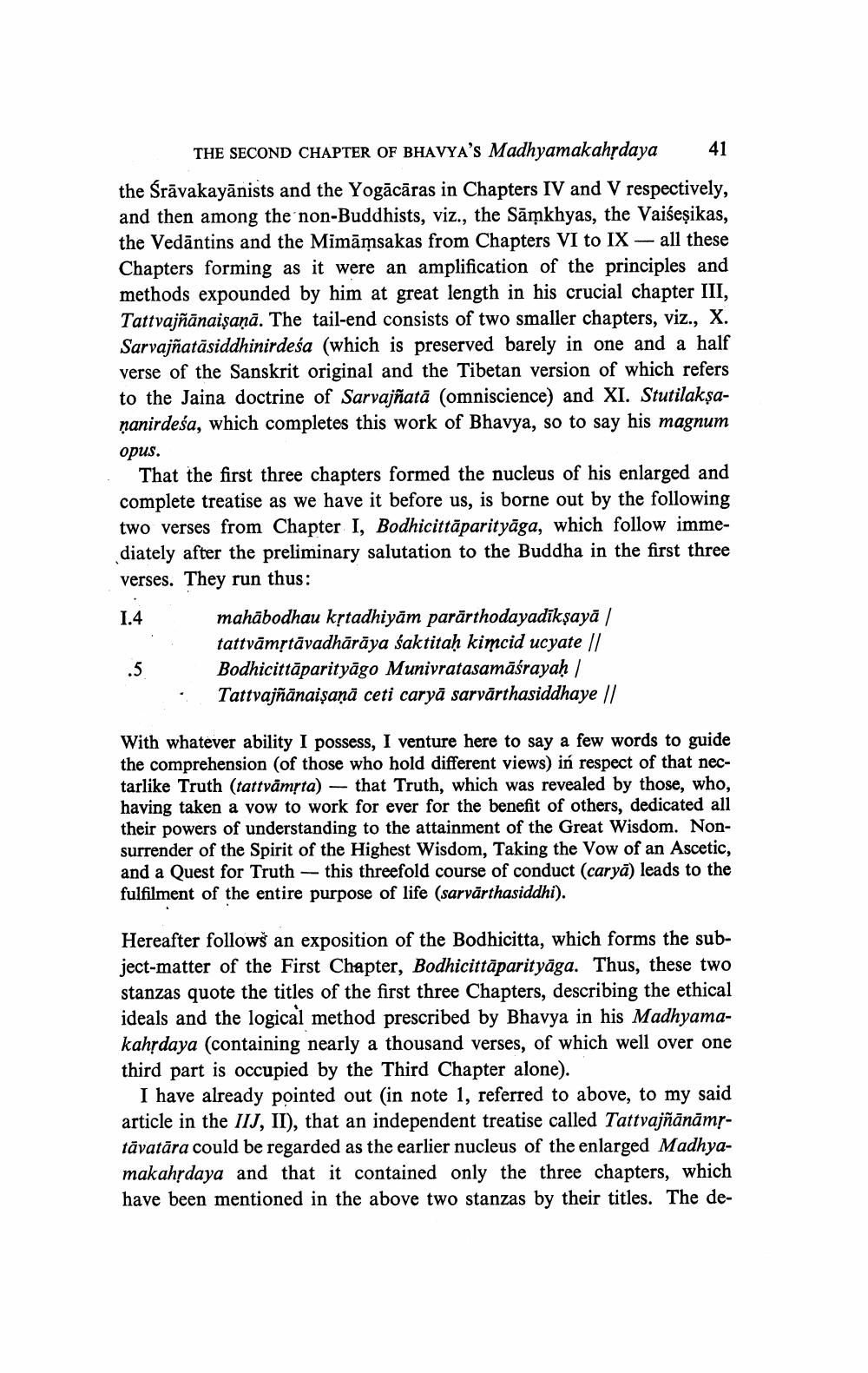Book Title: Second Chapter Of Bhavyas Madhyamakahrdaya Author(s): V V Gokhale Publisher: V V Gokhale View full book textPage 2
________________ THE SECOND CHAPTER OF BHAVYA's Madhyamakahṛdaya the Śrāvakayānists and the Yogācāras in Chapters IV and V respectively, and then among the non-Buddhists, viz., the Samkhyas, the Vaiseṣikas, the Vedantins and the Mimāmsakas from Chapters VI to IX - all these Chapters forming as it were an amplification of the principles and methods expounded by him at great length in his crucial chapter III, Tattvajñānaiṣaṇā. The tail-end consists of two smaller chapters, viz., X. Sarvajñatasiddhinirdeśa (which is preserved barely in one and a half verse of the Sanskrit original and the Tibetan version of which refers to the Jaina doctrine of Sarvajñatā (omniscience) and XI. Stutilakṣananirdeśa, which completes this work of Bhavya, so to say his magnum 41 opus. That the first three chapters formed the nucleus of his enlarged and complete treatise as we have it before us, is borne out by the following two verses from Chapter I, Bodhicittäparityaga, which follow immediately after the preliminary salutation to the Buddha in the first three verses. They run thus: 1.4 .5 mahabodhau kṛtadhiyām parārthodayadikṣayā | tattvāmṛtāvadhārāya śaktitaḥ kimcid ucyate || Bodhicittäparityāgo Munivratasamāśrayaḥ Tattvajñānaiṣaṇā ceti caryā sarvārthasiddhaye || With whatever ability I possess, I venture here to say a few words to guide the comprehension (of those who hold different views) in respect of that nectarlike Truth (tattvāmṛta) - that Truth, which was revealed by those, who, having taken a vow to work for ever for the benefit of others, dedicated all their powers of understanding to the attainment of the Great Wisdom. Nonsurrender of the Spirit of the Highest Wisdom, Taking the Vow of an Ascetic, and a Quest for Truth - this threefold course of conduct (carya) leads to the fulfilment of the entire purpose of life (sarvārthasiddhi). Hereafter follows an exposition of the Bodhicitta, which forms the subject-matter of the First Chapter, Bodhicittäparityāga. Thus, these two stanzas quote the titles of the first three Chapters, describing the ethical ideals and the logical method prescribed by Bhavya in his Madhyamakahṛdaya (containing nearly a thousand verses, of which well over one third part is occupied by the Third Chapter alone). I have already pointed out (in note 1, referred to above, to my said article in the IIJ, II), that an independent treatise called Tattvajñānāmṛtāvatāra could be regarded as the earlier nucleus of the enlarged Madhyamakahṛdaya and that it contained only the three chapters, which have been mentioned in the above two stanzas by their titles. The dePage Navigation
1 2 3 4 5 6
